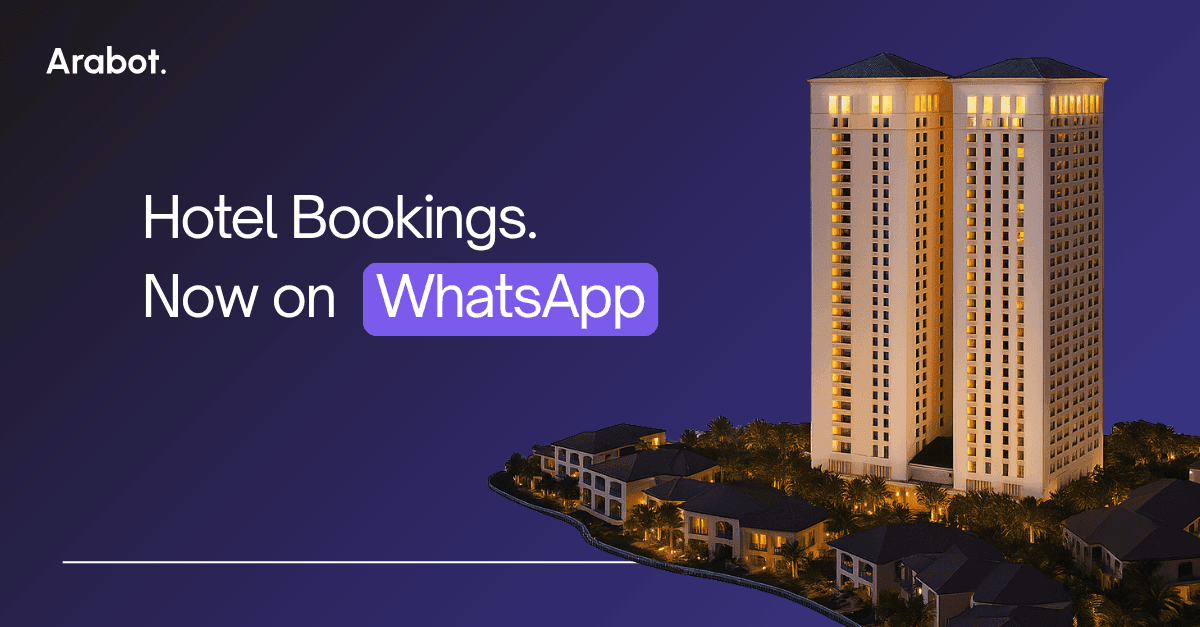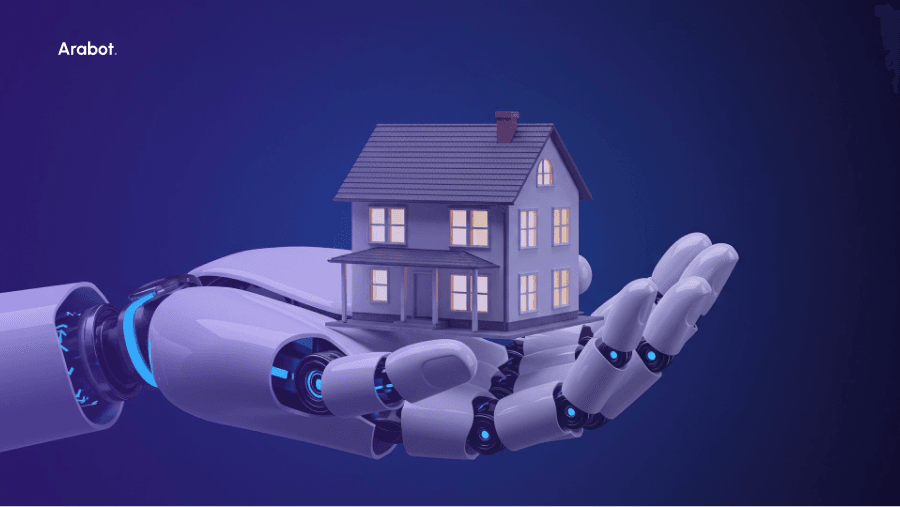- 1.
1. What is a chatbot?
- 2.
2. Are chatbots new?
- 3.
3. Who will be the chatbot users?
- 4.
4. What information sources will the chatbot use?
- 5.
5. How do arabot chatbots help businesses?
- 6.
6. How long does the implementation of a chatbot take?
- 7.
7. What kinds of questions should the chatbot be able to answer?
- 8.
8. Are your chatbots multilingual?
- 9.
9. What channels do arabot chatbots support?
- 10.
10. How easy is it to build my own chatbot?
- 11.
11. Do I need to have coding skills to get started with arabot chatbots?
- 12.
12. How can arabot chatbots help me with customer service?
- 13.
13. How do arabot chatbots work?
- 14.
14. What security concerns are there with bots?
- 15.
15. When will the chatbot escalate to a human agent?
AI Automation
Frequently Asked Questions (Chatbot FAQs)

Over the past couple of years, we have implemented many successful chatbot projects for medium and large-sized businesses from various industries ranging from logistics and e-gov to telecom, utilities and more. We have noticed that there are certain questions that potential and existing customers ask over and over again. Thus, we have summarized the most common chatbot FAQs for you in this blog article.
1. What is a chatbot?
In simple terms, a chatbot is an artificial intelligence (AI) based computer programme that can interact with a human either via voice or text through messaging applications, websites, mobile apps or through the telephone. These digital assistants can understand user requests and give prompt relevant answers.
Chatbots are one of the most advanced technologies that revolutionizes how humans communicate and interact with machines.
2. Are chatbots new?
No. Conversational chatbots have been around for decades now. In the past, there have been many unsuccessful attempts to build a chatbot that successfully mimics human conversation. The first chatbot ever designed was in 1966 by MIT professor Joseph Weizenbaum- it was called ELIZA and was developed to interact with people as a therapist. Following ELIZA, other chatbots have been developed like PARRY in 1972 by American psychiatrist Kenneth Colby, Jabberwacky in 1988 by developer Rollo Carpenter, Dr. Sbaitso in 1992 by Creative Labs and ALICE in 1995 by Richard Wallace.
3. Who will be the chatbot users?
During the chatbot design process, it is important to keep your user in mind as it will help you define the right chatbot features, functionality and build human-like interactions. It might be helpful to answer the following questions to design a user-friendly chatbot — What kinds of problems do your users seek a solution for? Are they more likely to use text/messaging or voice to communicate with your brand? Do they contact you via your website, phone, social networking apps or some other site?
4. What information sources will the chatbot use?
In order for a chatbot to function properly, it is crucial for the programme to access your business data, whether from your existing knowledge base, website, internal databases, existing documents, reservation systems, shipping information, product inventories or other sources of information.
Once you have determined which data sources will be needed to answer the question asked, you can identify how the bot will access each source in order to interact with the user in a meaningful way. Will you need to make your existing sources available? Is there an open API
5. How do arabot chatbots help businesses?
Using arabot chatbots, businesses with a large customer base can benefit from automating customer service, allowing customer service agents to focus on more challenging tasks and higher-value work that require a human touch.
With arabot, you can deliver a personalized customer experience at scale. Here are some chatbot benefits for you and your customers.
- Answer and respond to customer questions.
- Automate repetitive tasks.
- Cut down on operational costs.
- Allow customers to communicate with your business via existing messaging platforms.
- Deliver customer support round the clock.
- Schedule appointments, including phone calls, meetings and webinars.
- Send users surveys, including customer satisfaction surveys.
- Transition to a live chat with a real human.
- Manage thousands of conversations simultaneously.
- Provide users with timely updates including receipts and order confirmation.
6. How long does the implementation of a chatbot take?
It depends on the complexity of the client requirements. Our current record is 4-6 weeks to build an average simple bot. However, in more complex scenarios, where the client requirements are not clear or there is a need for multi phases of building, it might take 2-3 months.
7. What kinds of questions should the chatbot be able to answer?
Chatbots are designed to respond to the most frequent customer requests and use cases. It is important to focus on mastering these questions before adding new functions and conversations later on.
Remember to list all the common questions and prioritise them with regard to the volume and complexity of each required response.
8. Are your chatbots multilingual?
At arabot, we deliver multilingual support at scale and automate customer service in both English and Arabic. Our chatbots are trained to decipher different Arabic dialects, understand exactly what the user wants and respond naturally and accurately.
9. What channels do arabot chatbots support?
Our chatbots are omni-channel, which means you can engage your customers where they spend most of their time and connect your conversational app to the tools and applications that your customers already use.
The following are examples of channels that our chatbots support to interact with your current and prospective customers:
- Your website.
- Your mobile app.Facebook Messenger.
- Facebook Messenger.
- WhatsApp.
- Slack.Telegram.
- Telegram.
- Hangouts.
10. How easy is it to build my own chatbot?
With our AI-powered tools, building your own chatbot is quite easy! All you have to do is choose your chatbot platform, connect your chatbot with your business account and add a workflow to start chatting with your current and prospective customers.
11. Do I need to have coding skills to get started with arabot chatbots?
No coding skills or knowledge required to create a chatbot that suits your needs and requirements on arabot platform. Choose the purpose of your bot and build custom workflows in minutes.
With arabot, you can create a chatbot by accessing a variety of templates available for different industries like automotive, e-commerce, utilities among others. Edit the template and add your own custom conversation flow to the chatbot.
12. How can arabot chatbots help me with customer service?
Our chatbots can greet your visitors by their name, place orders for your customers, offer a helping hand with product availability, update on order status, answer FAQ questions, collect leads and even save forms!
13. How do arabot chatbots work?
Our AI-powered chatbots do more than react to keywords; they understand and analyze the intent of the user’s request, answering queries in a more human-like way. Arabot’s AI proprietary technology stands out as the pioneer platform of its kind, providing an intelligent Arabic bot built upon a state-of-the-art Arabic NLP engine, which deals with understanding and analysing Arabic content and conversation in an accurate and efficient way. Here at arabot, we have built a conversation/dialogue management system as a hybrid rule-based system fused with Deep Machine Learning to reach advanced levels of Natural Language Understanding (NLU).
The key technologies powering arabot conversational AI:
1. Natural Language Processing (NLP): Deals with understanding and analyzing Arabic and English content and conversations to reach advanced levels of natural language understanding in an accurate and efficient way. NLP allows AI algorithms to better understand the context and meaning of users’ requests. By relying on NLP, chatbots can interpret the basic information from the conversation, correctly understand and render synonyms, jargon and common abbreviations and format the information they have collected in natural language.
2. Deep Learning (DL): Through Deep Learning, our chatbots are now programmed to learn by example and determine whether their output is accurate or not on their own, helping to operationalize available data with higher accuracy and draw better conclusions
3. Machine Learning (ML): This technology allows our chatbots to become more accurate in predicting outcomes without being explicitly programmed. This enables developers to train algorithms to capture data from conversations, operationalize it and turn it into some action.
14. What security concerns are there with bots?
Data protection is our top priority. As long as your website and technology stack are set up securely and you take steps to ensure that your customer data is secure, then rest assured that your data is safe with us.
At arabot, we use protocols, systems and security to protect users.
15. When will the chatbot escalate to a human agent?
There are some scenarios when the client’s needs cannot be fulfilled by automated chat. In these cases, human support is required.
To ensure a seamless customer transition, an escalation to a human agent might be required when a customer:
- Requests a phone or video call.
- Asks the same question multiple times.
- Asks a question the bot doesn’t know how to answer.
© 2025 copyright Arabot. All rights reserved.
 Insurance
Insurance Healthcare
Healthcare Automative
Automative Hospitality
Hospitality Banking
Banking Government
Government Telecommunication
Telecommunication Education
Education Human Resources
Human Resources
